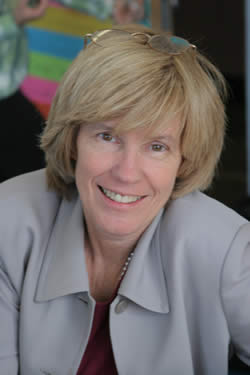Filed Under > Views on the News
Trusting in Wild Things: Lucy Calkins recalls that the late children's author and illustrator Maurice Sendak was "unafraid to put real books in kids' hands"
Trusting in Wild Thing: Lucy Calkins recalls that the late children's author and illustrator Maurice Sendak was "unafraid to put real books in kids' hands"
By Lucy Calkins
Of the many “reading wars” over the years, none has been more bitterly fought than about whether to use real books with young readers or for-profit collections of created, decodable “text.”
It would be hard to imagine a more powerful illustration of why real books matter than the work of Maurice Sendak, renowned author of Where The Wild Things Are and other children’s tales.
Sendak was unafraid to put real stories in kids' hands. His own brilliance and playfulness gave his readers the imaginative powers to wonder at night if their rooms could open onto dark lands– and his trust in their intelligence and strength gave them the fortitude to confront the monstrous creatures that dwelt there.
Sendak’s books reflected the terrors of the world he lived in, from concentration camps to AIDS – material that could easily be (and sometime was) deemed inappropriate for youthful audiences. The psychologist Bruno Bettelheim once publicly rebuked Sendak for subjecting Max, the young hero of Where The Wild Things Are, to the “desertion” of being sent to bed without supper.
Yet generation after generation of children warmed to Sendak books in which protagonists are orphaned, kidnapped and eaten by lions. They did so, in part, because his stories were often hilariously funny – but also because he gave their darkest fears a name, and when we name something, however frightening, we take the first step toward coming to terms with it.
Certainly there is a moral case to be made for exposing children to literature that does not varnish life’s harsher realities, but Sendak’s honesty justifies itself on even more compelling grounds. The lesson he teaches us is that children, and indeed, all people, respond to real, true things. Their imaginations engage with texts when they recognize emotions and experiences from their own lives – even, and sometimes especially, when those emotions and experiences are represented by monsters and grotesques. When we make reading bland – when we assume that children “can’t handle” life’s darker materials – we lose the most important hook we have to make them as passionate about literature as we are ourselves.
Surely there has never been a book for very young children that worked its magic the way Sendak's Wild Things did. One reason why children love it to the point of literally wearing down its pages is that Max is so naughty – and so powerful that he can escape the ordinariness of his everyday life. What child doesn’t secretly long for those qualities?
Just this morning I was visiting a first grade classroom and there in the corner of the room was the basket of favorite picture books, including several copies of Where The Wild Things Are. When I asked the teacher why she had extra copies of that one title, she said, "One copy of that would never be enough for the children." I noticed how dog-eared and worn the pages were. "Shouldn’t we get you some new copies?" I asked. She smiled. "Those are new."
Lucy Calkins is Robinson Professor of Children’s Literature at Teachers College, Columbia University, and founding director of the Teachers College Reading and Writing Project
Published Friday, May. 11, 2012
